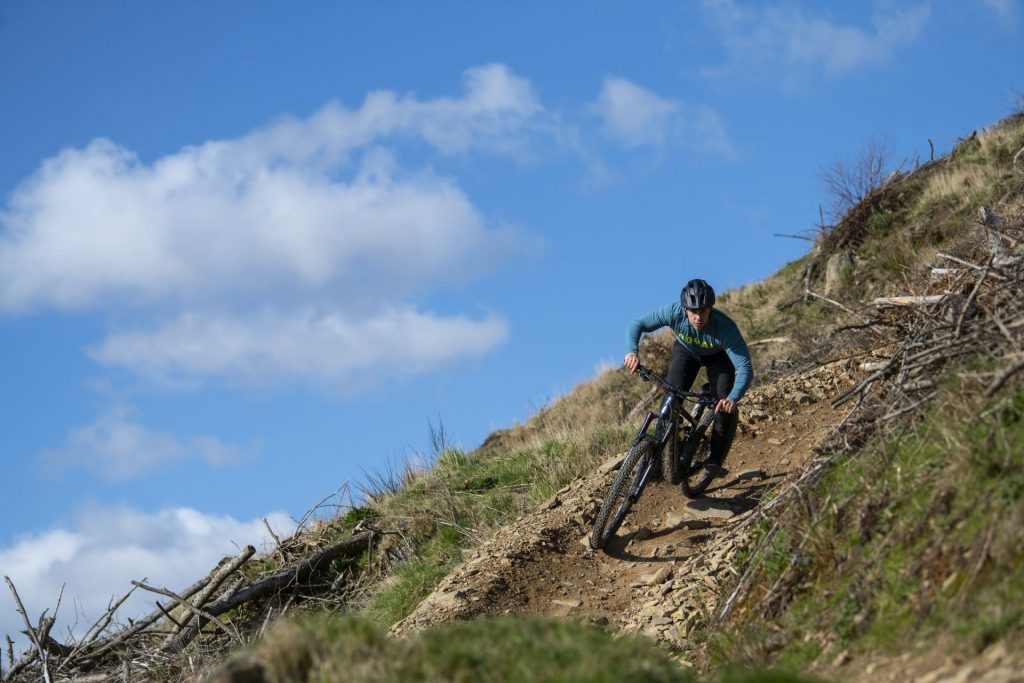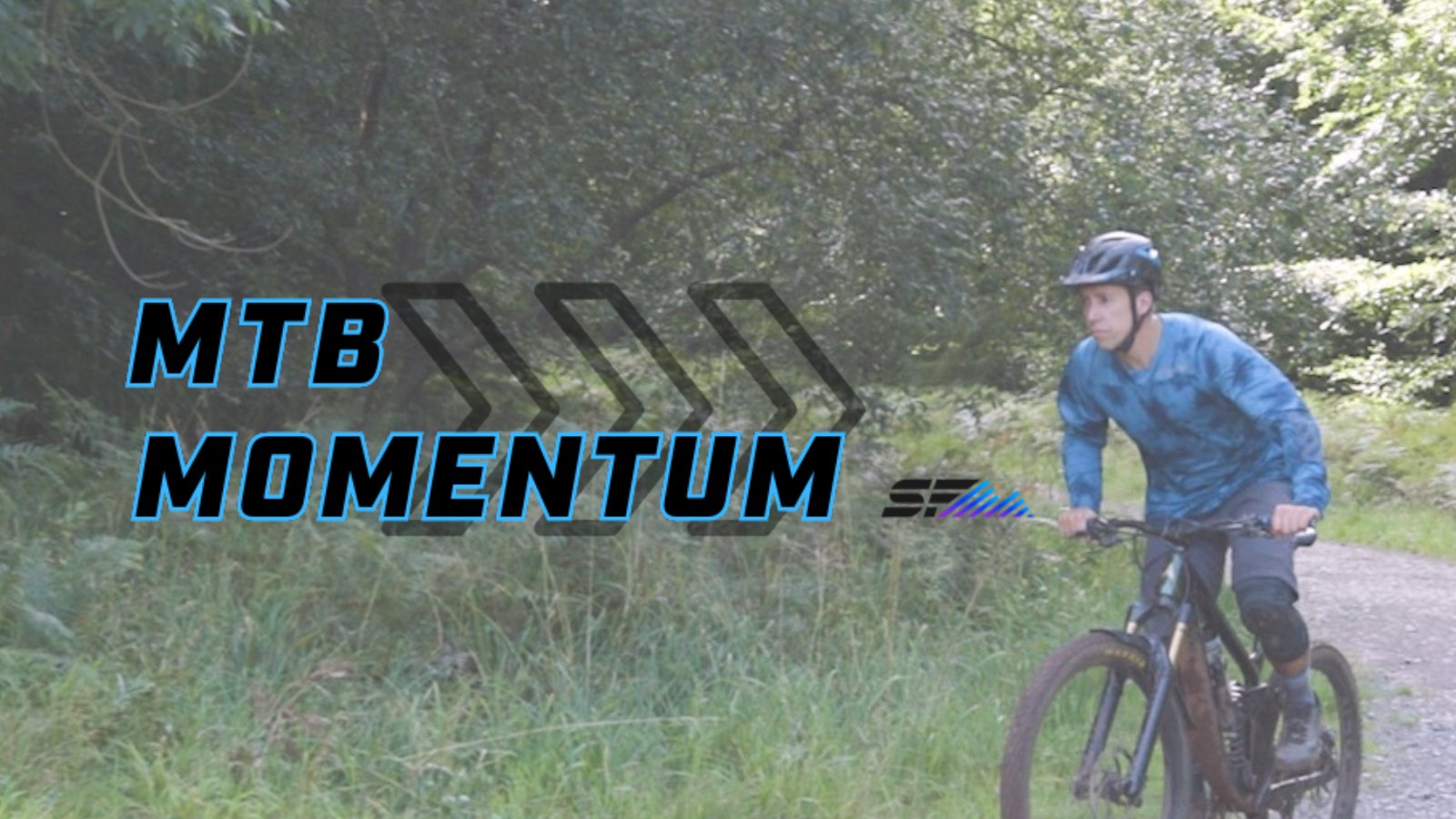To me, trail riding is mountain biking. It’s what we all do most weekends. We head out to the woods with our bikes and hit the trails. Yes, you might do the odd race or day on a chairlift, but on the whole, most riders simply ride trails of one type or another.

As you probably understand, fitness plays a big part in your riding, and how much you enjoy it. It’s your MTB fitness that lets you ride further and faster and it lets you hold a strong body position when things point down hill.
Whilst at first it can seem complicated (there is a lot of nonsense on the internet about fitness!), it is actually pretty simple, so I am going to break down exactly what makes a trail mountain biker fit.
It’s All Relative.
First thing to understand is that fitness is a relative term. It is all about fitness for the task at hand. So a marathon runner is fit, but would struggle with the stop start intensity and sprinting of a football (soccer) match. One is not fitter than the other, it’s just that footballers are fit for football and marathon runners fit for running.
I would start by thinking about what fitness means to you and your riding. How far do you normally ride? Or, how far would you like to ride? How much climbing? And then, consider those one off trips away for a few days or even a week. They are usually way more demanding than riding at home, so for example, have a think about the demands of mountain biking for 3 days back to back in the mountains. This short exercise will tell you about what MTB fitness means to you.
Components Of MTB Fitness.
We can break down mountain bike fitness into the different parts that make it up. This is a simplified version of what I believe makes up a well rounded and ‘fit,’ rider.
Aerobic Fitness
High Intensity Fitness – Lactate threshold and VO2 Max
Sprint Power
Mobility
Strength
Let’s look at each of those in turn:
Aerobic Fitness
This is at the heart of your riding fitness, and should be the foundation upon which your fitness is built. Think of it as the base of the pyramid. The wider the base, the higher the pyramid of fitness can be built. This is also the area most neglected by the majority or riders as it is either passed over as being too easy, or is skipped in favour of fashionable high intensity interval training sessions.
The key to developing your aerobic fitness is to accumulate a large volume of riding at low intensities. Zone 2 for most heart rate zone systems, or a 3-4 out of 10 for effort. You should be able to chat easily at this pace and should also be able to nasal breathe the whole time. There should be no burn in your legs and lungs and you should finish feeling pretty fresh, like you could go again tomorrow.
To get a more in depth insight into aerobic fitness for mountain bike riding and racing, check out my YouTube video on it, here:
High Intensity Fitness
I have simplified this massively as we could sub-divide this a number of times, but in the interest of simplicity and making this user friendly, we are going to lump, tempo training, lactate threshold, and power at VO2 max all into one big group. Basically what we are talking about here is harder efforts anywhere from 30 seconds up to 30-40 minutes.
This is the type of fitness that lets you push a bit harder up the climbs and flats and is the faster paced pedalling parts of your trail riding. You can develop this with interval training sessions, and the great news is that compared to aerobic training, it is very quick to see results. After a few sessions you should feel, and be able to measure the difference. The issue people encounter is that if your aerobic system is under developed, then the gains will be short lived and you will quickly plateau until you improve your aerobic fitness.
Interestingly, most group rides occur within this broad range. Most MTB rides happen in Zone 3 (about 5-6 out of 10) for most riders. The fittest riders in the group may spend some time in Zone 2, and the least fit will often be red lining and hitting Zone 4-5 just to keep up, often leading to reduced enjoyment, and eventually buying an E-Bike! Haha
Sprint Power
This is short duration, high output standing pedalling anywhere from 2 pedal strokes up to about 30 seconds of leg burning pain. It is closely related to your strength, and genetics also play a big role in your ability to be explosive.
This explosive type of fitness gives you the drive to clean a short, sharp climb, to sprint at a race, or to gain some trail speed between turns or features.
As we you older, this is the area that really declines in mountain bikers unless you train it regularly. With the popularity of wide range cassettes and full suspension bikes, modern riders spend way more time sitting and grinding compared to when I started riding in the 90s, and this contributes to losing top end sprint power. To maintain and develop it, you need to be doing maximal sprints as part of your riding and training, as well as developing a good foundation of strength in the gym, or at home using your bodyweight.
Mobility
This is the ability to get into certain positions and then be strong there too. It is basically a combination of flexibility and strength and it is essential to being comfortable pedalling all day and it enables you to adopt the correct position for descending.
Each joint needs different levels of mobility for specific tasks on the bike. For example:
Ankles need to be mobile to drop your heels behind the pedal axle.
Shoulders need enough mobility to help protect you when you crash.
Your upper back posture and mobility needs to allow you to look forward down the trail.
For an in depth run down on riding position, including the mobility demands required, check out this video:
You will be able to improve your mobility with a mixture of dedicated mobility training and through quality strength training sessions. You should also use a thorough warm up pre-riding to maximise your mobility throughout the ride.
Strength
It’s time to hit the gym and get strong. Not only is strength a game changer for your riding, but it is essential for a healthy, active lifestyle, especially as you age. Like aerobic work is to your pedalling, strength is the foundation of your riding position when descending.
At the end of a long day out riding, it is your strength that you fall back on when you are tired and hitting the last trail of the day. It is the base upon which your sprint power is built. It improves your cycling economy, making you more efficient and able to ride further, with less effort. Stronger hips and core can reduce or prevent the dreaded lower back pain on long rides, and of course, being strong makes you more robust, and less susceptible to injuries on the bike.
I could probably sit here and write another 10 pages on the benefits of strength training for mountain bikers, so take it from me, that getting stronger is well worth your time and effort.
In general, for mountain bikers, I recommend doing 2 full body sessions per week for most of the year. Maybe in the depths of winter you do 3 sessions and ride less, and maybe in summer you ride loads and only do 1. Either way, the key is to consistently train all year, chipping away, focusing on good technique and on mastering the basics.
My approach places a lot of emphasis on single leg training as well as fundamental upper body movements like chin ups and press ups. I avoid gimmicks and fads and rarely use Crossfit style WOD’s that prioritise working hard over the quality of the work being done. Train smart, play the long game, and in a few months from now, you will be glad you started, both in terms of your riding and day to day life.
Putting It All Together
At first glance, that can seem like a lot of training, especially if you have a job and possibly family too. The great news is that many of them overlap, and with some planning, you can squeeze in little doses of training in your week.
For instance, your aerobic training will improve your high intensity fitness. Your strength training will improve your sprint and your endurance. Your mobility work can mostly be done during strength sessions. The sprints and high intensity work can be added into your normal trail rides with your mates. You can do 15 minutes of mobility in the evening whilst you watch Netflix. You can grab 45 minutes on a spin bike or turbo over your lunch break.
For some more ideas about how to go about planning your training and making this all fit, you can watch this video:
Questions?
Thanks for taking the time to read this far. I really hope that this was helpful to give you an over view of what it means to be a fit mountain biker. Remember that we are all individuals, starting from different places and with different goals, so figure out where you are, where you want to go, and then make a plan.
If you have any questions then fill in the contact form at the bottom of the page and I’ll get back to you.
If you would like me to do the hard work and plan your training out for you, then you will want to check out The Over 40s MTB Programme, or if you are a bit younger, The Complete MTB Programme. Not sure which one? Drop me a line!
Cheers
Ben
